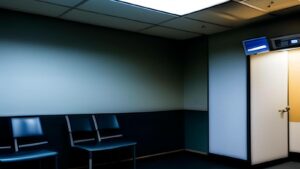BOSTON — Scientists at the acclaimed Harvard Nasal Institute (HNI) made a startling discovery this week: every sneeze a human makes generates a transient, free WiFi signal. The results, which have baffled researchers and Internet providers alike, were published in the prestigious Journal of Preposterous Medical Findings.
Lead researcher Dr. Ima Schnozzle stated, “Initially, we were just trying to understand why some sneezes can blow a tissue clean across a room. The WiFi thing was quite unexpected. We actually thought our intern, Tim, was screwing with our equipment.”
Using sophisticated radio detection technology and a particularly potent pepper, researchers discovered that a sneeze generates a burst of radio signals in the 2.4GHz to 5GHz range, identical to that used by common WiFi technology. This fleeting burst of connectivity, lasting mere milliseconds, was potent enough to load a full Wikipedia page when synchronized perfectly.
Upon hearing the news, allergy sufferers worldwide celebrated, dubbing themselves “natural-born internet providers”. Ned McSniffles, a lifelong hay fever sufferer, joked, “I used to dread spring, but now I’m looking forward to becoming a walking hotspot. Bring on the pollen!”
The discovery has also sparked the interest of major tech companies. Globex Corp., a leading manufacturer of routers, stated, “We’re exploring partnerships with tissue manufacturers. Together, we could revolutionize the industry: 4-ply tissues with integrated data boosters. Sneezes would become the backbone of next-gen Internet connectivity.”
While the discovery has caused excitement in the tech world, the medical community is concerned about a surge in self-induced sneezing. Dr. Ineeda Tissue, an allergist, cautioned, “Achoo-fi, as it’s been dubbed, could lead to a spike in intentional pepper inhalation. Despite the allure of free WiFi, we can’t forget the human nose was not designed to be a data carrier.”
Simultaneously, conspiracy theorists have taken to the internet, claiming sneezes are a ploy by “Big Internet” to track humans. This has led to a surge in the sales of nasal plugs on several eCommerce websites.
In the meantime, scientists at HNI are looking into potential commercial applications of this discovery, including harnessing the power of large-scale sneezes at public events like football games and concerts to create massive, temporary WiFi zones. Dr. Schnozzle said, “The Super Bowl could become the Super Sneeze Bowl. Just imagine the possibilities!”
As of now, the team is awaiting approval for a follow-up study to determine if other bodily functions might offer similar benefits. The world waits with bated breath and a tissue at the ready.






